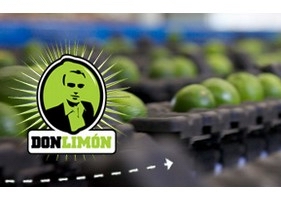 Huanglongbing - HLB) have caused a shortage of Mexican limes. The supply of limes during April and May will be less than previous years. A normal level of Brazilian limes will be exported, but a “delayed” season of Mexican limes will mean lower volumes to the European market with possibly higher prices.
Huanglongbing - HLB) have caused a shortage of Mexican limes. The supply of limes during April and May will be less than previous years. A normal level of Brazilian limes will be exported, but a “delayed” season of Mexican limes will mean lower volumes to the European market with possibly higher prices.In September 2013, hurricanes in Mexico reduced flowering in lime plantations. In Mexico there are three main regions where the limes are produced, these are: Colima, Michoacán and Vera Cruz. All these regions were affected by hurricanes which reduced flowering in lime plantations; moreover the crops were affected by the citrus greening disease, which is one of the worst citrus diseases causing the yellowing of the entire leaf, premature defoliation, decay of lateral roots and death of the entire plant.
These two factors represented losses of 50% in the normal harvest levels from Mexico. Naturally, with reduction of half of the exports, the current FOB prices for Mexican limes have increased. “There's a great price situation for limes in the United States,” said Andreas Schindler of Don Limon. He noted that prices remained at $60 per 20-kilogram box for several weeks, and then the price jumped to $90 per box, and according to Schindler, prices don't look like they're coming down soon. These values are equivalent to the FOB price of EUR 17/box of 4.50 Kg Net for limes with US quality standards (lower than European standards).
With such high prices in the US market, most Mexican producers harvested all available limes, even those limes which were not totally mature for export. Now the fruits in the fields are only the small and tiny ones. “We estimate that more than 70% of the available fruits are in count 60er, 63er and 70er (in 4.5 Kg. boxes). These counts are not the preferred ones in the European markets; therefore, one can imagine that no Mexican limes will arrive in Europe in April and probably not even in May of 2014.”
In this situation, Brazilian growers/exporters are willing to increase the volume for export, but also, feeling the demand from European markets, are increasing the prices for ‘raw material’ in origin. The interaction of all these factors would represent a stable market for limes in April and May. Naturally, if demand in Europe improved, then the trend will be to have higher prices for limes at the beginning of the European summer.





